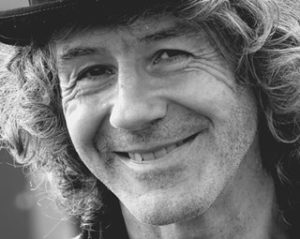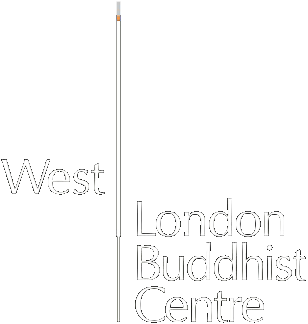A Door onto Wilderness
 I arrived in London fifteen months ago after a decade of living in the countryside. At the time I wondered how I was going to adjust to my new urban existence, no longer living under canvas in green fields for eight months of the year immersed in nature. It turns out that the rich busyness of my work with the WLBC and the satisfaction and growth that I’ve experienced as a result have banished my sense of having lost something precious to a hidden corner of the back garden.
I arrived in London fifteen months ago after a decade of living in the countryside. At the time I wondered how I was going to adjust to my new urban existence, no longer living under canvas in green fields for eight months of the year immersed in nature. It turns out that the rich busyness of my work with the WLBC and the satisfaction and growth that I’ve experienced as a result have banished my sense of having lost something precious to a hidden corner of the back garden.
Now, like most other inhabitants of the Capital, I find myself in lockdown. My patch has shrunk to a one bedroomed flat in Acton and occasional forays to the shops and to Gunnersbury Park. For the first weeks of lockdown, working from home engaged me to the full. However, the situation shifts dramatically this week. After much discussion, consultation and pondering, the Centre Team has been furloughed so as to reduce the Centre’s costs and help us get through this period of closure. For the first time in fifteen months, ironically in my one bed-roomed flat, I find myself with the prospect of some sense of spaciousness. As the busyness retreats, the stark reality of my confinement dawns and my sense of a need for connection with nature reasserts itself. So what’s to be done?
Of course my runs in Gunnersbury park connect me with the glorious verdant and floral burgeoning of Spring. This feeds my heart. But the question also brings me to a theme of which I’ve wanted to deepen my exploration for some time – that the greatest opportunity available to connect with nature is through our own bodies. Our bodies present us with the most immediate and most accessible encounter with the natural world that still honours the mandate ‘stay at home’.
In the Satipatthana Sutta the Buddha teaches us ‘the direct path to enlightenment’. This takes the form of attending to the body, the feeling-tone of our experience, attending to our mind/heart and finally of imbuing this comprehensive awareness of experience with the blamelessness of ethical behaviour. This path starts with and in practice needs to persistently root itself in the body. The patch of wilderness that is our body, in all it’s complexity, it’s mystery and it’s ungovernability, is the ground of our liberation.
Saraha, the wandering eight century yogi, is reputed to have said ‘There is no place of pilgrimage as fabulous and as open as this body of mine, no place more worth exploring’(1). I plan to use this time of furlough to embark on this inner pilgrimage. Primarily, I’m setting the intention, following the Buddha’s recommendation, to anchor my daily meditation and mindfulness in sense experience. To support this, I’m going to try to develop mindful movement practice, such as yoga and qigong. At this point I’ll put in a plug for our WLBC bodywork teachers, Maymay, Rose, Sophie, Kiki, Pawel, Jake and Charlie who are enterprisingly continuing their classes online (see https://westlondonbuddhistcentre.com/about-us/we-are-online/). I’m hoping that a silver lining of the current period of uncertainty and loss will be a journey that takes me simultaneously into the depths of my own nature and into greater intimacy with Mother Nature, my source, my sustenance and my destination.
(1) Reginald Ray, Touching Enlightenment, p.12

